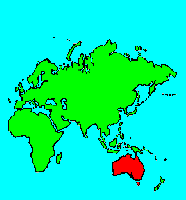SPECIES INFO
Blue wren or superb fairy wren (Malurus cyaneus) is found in south eastern and southern Australia to Tasmania. There is considerable sexual dimorphism in this species. The males are black and blue with brown wings. The females are brown above and pale below.
There are six subspecies. The nominate subspecies, ssp cyaneus, is found in Tasmania. The subspecies samueli and elizabethae are found on Flinders and King Islands respectively in the Bass Strait. The subspecies cyanochlamys is found from southeastern Queensland south to central Victoria. The subspecies leggei is found from SW Victoria west to southern South Australia. The subspecies ashbyi is found on Kangaroo Island.The fairywrens genus (Malurus) contains 13 species. This genus is found from Aru east to New Guinea and south to Australia where most members of this genus are typically found. Most all small birds with bright colors. This genus received species from the Chenorhamphus and Todopsis genera.
The Maluridae family contains the fairywrens, the emuwrens, and the grasswrens. This family is found from Aru east into New Guinea and south into Australia. There are 26 species in this group. Most species are about 6-8 inches in length.
We have herein collected several families that are commonly found in the area around New Guinea and Australia. There are also a few species in Oceana including Hawaii. In Monroe in 1993 these families were all placed in the closely related superfamilies Menuroidea with 31 species and Meliphagoidea with 276 species.
This combination will help one understand this large group of birds limited to a rather distinct area of the world.
In most modern bird taxonomies, the perching birds (Passeriformes) is treated as a single order. This large order has about 5739 different species. A common characteristic of this order is three forward toes and one reverse pointing toe. Most of species are also characterized by a tendon locking mechanism that permits their feet to lock onto branches when they relax. Recently, Monroe and Sibley in 1993 have divided this large order into six main divisions. To help our users navigate this gigantic number of species, we have arbitrarily placed these 6 different divisions at the order level.
This division can be referred to as:
Order Passeriformes (5739 species)
Suborder Passeri (4580 species)
Parvorder Corvida (1103 species)
Aves contains about 8,650 different species of living birds known to science. Each year about one new species is discovered in some remote rain forest or remote island. In addition, scientists have been raising many subspecies to full species status which may raise the species count to 10,000. Birdlife recognizes 10,027 species as of 2011.
However, each year about one species goes extinct. The rate of extinction is increasing, and the rate of new discovery is decreasing, so that the number of bird species will soon begin to decline rapidly. Although different taxonomists would organize the birds differently, there are approximately twenty-seven orders of birds. These orders are broken down into about one hundred and fifty-five different families.
Recent research of the genetic structure of some of the shore birds and owls would indicate that the present organization of orders and families should have some modification.
The birds are a worldwide group of animals that are characterized by having the front limbs modified into wings that are used for flying. Perhaps the most unique feature of the birds is the feathers. These feathers are made up of a central support called a quill and a series of small filaments that are hooked together as barbs.
For many years it was believed that Archaeopteryx discovered in Bavaria was the oldest bird from about 150 million years ago. However, in l986, Sankar Chattterjee, a Texas paleontologist, reportedly discovered a bird in the genus Protoavis that lived about 225 million years ago.
When this project was begun in 1978, we used Austin & Singer for bird taxonomy. Since then, we have adopted many changes, but have kept some older concepts that are still found widely in the literature. Recently, we have used Clements and Howard & Moore. Very recently, we have used Monroe and Sibley for the higher taxonomy of the perching birds.
Backboned Animals (Phylum Chordata) are the most advanced group of animals on earth. These animals are characterized by having a spinal cord or backbone. Most members have a clearly defined brain that controls the organism through a spinal cord. Fish, amphibians, reptiles, birds, and mammals are in this phylum.
Currently, some taxonomists believe that the fish should be divided into two groups (sharks and regular fishes) and that there are some other primitive groups in the phylum such as hagfish or lampreys.
Animal Kingdom contains numerous organisms that feed on other animals or plants. Included in the animal kingdom are the lower marine invertebrates such as sponges and corals, the jointed legged animals such as insects and spiders, and the backboned animals such as fish, amphibians, reptiles, birds, and mammals.


